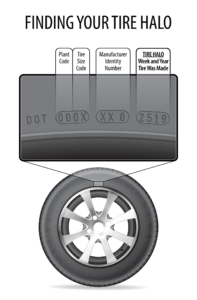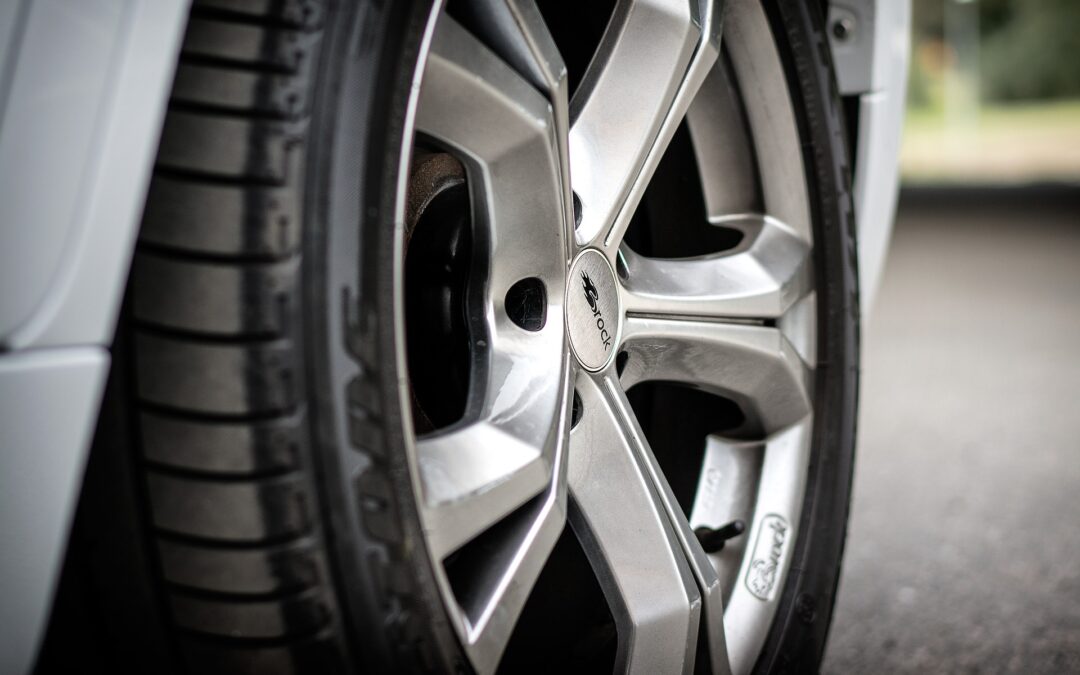Know Your Tire’s Age
This is the 5th article in the LETMAP series. It is very important that you know your tire’s age for each of your vehicles. Driving on old, outdated tires is very dangerous, and can lead to accidents causing injury or even death.
– Quick Reference: Replace Tires after 6 years, regardless of tread depth
The issue of a tire’s age becomes even more important when you understand the natural forces that affect the quality, and subsequently the safety of your tires. The passage of time is the first, and probably the easiest criteria that you can track. And you can easily find the date of manufacture, which is printed on the sidewall of every tire.

This image shows the area known as the DOT Tire Identification Numbers. We refer to this as the “Tire Halo”. It effectively shows the birth date of your tire. This number is actually broken down into two dates, one referring to the week of the year, and the other referring to the year the tire was manufactured. For example, if your Tire Halo reads 2512, that means it was made in the 25th week of 2012.
Most vehicle manufacturers recommend replacement when your tire’s age hits 6 years. Tire manufacturer’s warranties also expire at 6 years. To wait any longer than 6 years to replace your tires is to gamble with your tire’s integrity, and is very risky for drivers.
There’s more to your tire’s age than you can see.
Tires are affected by many conditions to which they are exposed over the course of their useful life. Sun exposure, temperature changes and storage conditions all contribute to the rate of your tire’s aging. The amount of usage as well as how your tires are maintained also plays a part in the way your tires age.
To combat the natural aging of the rubber that makes up your tires, they contain anti-aging compounds known as anti-ozonants. These help the rubber remain soft and flexible, helping it grip the surface of the road. Over time, air permeates the tire wall, degrading the flexibility of the rubber. This is known as oxidation.
Similarly, the National Highway Traffic Safety Administration (NHTSA) maintains that tires age more rapidly in heat. So if you live in a climate that is warm, or there is more direct sunlight hitting your tires, you can expect them to age more rapidly.
And finally, when thinking about your tire’s age, you must also consider the way in which you maintain them. Driving on either over-inflated or under-inflated tires can cause internal damage that may not be visible by a casual inspection. Impacts and punctures can also have a negative impact upon the life expectancy of your tires. These occurrences, even when repaired properly, weaken a tire’s integrity and contribute to accelerated aging.
Summary
It is advisable to replace your tires at 6 years of age, regardless of tread depth and wear. If your tires are exposed to outside elements, especially direct sunlight, it is wise to seek the counsel of your local tire professionals as to whether they may need to be replaced sooner than 6 years. Talking to the experts is always advisable when you have questions about your tire’s age and integrity.


Recent Comments